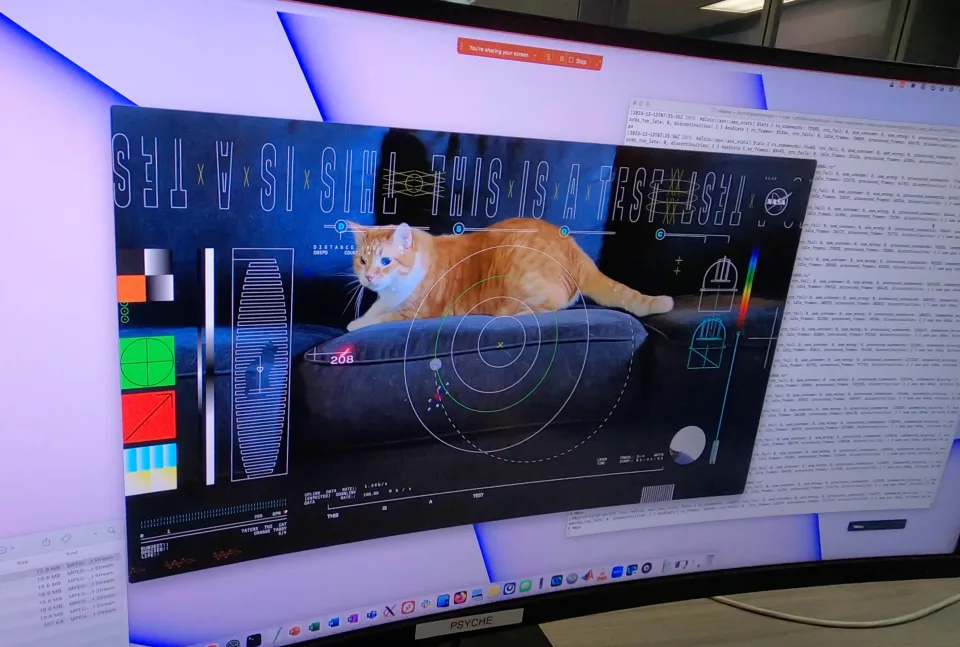NASA‘s recent feat in space communication has taken a whimsical yet groundbreaking turn. Earlier this month, the Psyche spacecraft, situated 19 million miles from Earth, transmitted a unique message: a 15-second ultra-high definition video of an orange cat named Taters playfully chasing a laser dot. This event marked the first time a UHD streaming video was sent from deep space to Earth using laser technology.
The spacecraft was launched recently in October
The Psyche spacecraft, launched in October, is en route to study a metal-rich asteroid located in the main asteroid belt between Mars and Jupiter. The mission’s success in transmitting this video is more than just a quirky space anecdote. It represents a significant leap in space communication technology.

The video was initially uploaded to the spacecraft before its departure and then beamed back to Earth on December 11. The transmission, using a flight laser transceiver aboard the spacecraft, reached Earth in just 101 seconds. To put this into perspective, Psyche was about 80 times farther from Earth than the moon is at the time of transmission. The data transfer rate achieved was an impressive 267 Mbps.
What makes this achievement particularly noteworthy is the efficiency and speed of the data transfer. According to Ryan Rogalin, the receiver electronics lead for the project at NASA’s Jet Propulsion Laboratory, the video was sent back to Earth faster than most broadband internet connections. In fact, after the video arrived at the Palomar Observatory, it was relayed to the Jet Propulsion Laboratory over the internet, and this terrestrial connection was actually slower than the laser signal from deep space.
This successful demonstration of laser communications from deep space opens new possibilities for future space missions. It not only offers a faster way to transmit data across vast distances but also highlights the potential for more efficient communication in space exploration. As we continue to reach further into the cosmos, advancements like these pave the way for more robust and reliable communication systems, essential for the success of long-duration space missions.
RELATED:
- Forecasting the Future: NASA and IBM Join Forces for AI in Weather
- NASA launches its free streaming service with ad-free content
- Amazon Alexa to be NASA’s digital assistant on the Artemis I space mission
- Best Messaging Apps for Android in 2023
(Via)






